The Hypnerotomachia Poliphili, literally “Polifilo’s Dream of Love-Struggle”, published in Venice by Aldus Manutius in December 1499, is considered as one of the finest incunabula, and one of the most learned texts of the Renaissance. An enigmatic dream within a dream unfolds as Polifilo struggles to attain his heart’s desire through a series of challenges that end when he is finally reunited with his beloved Polia.
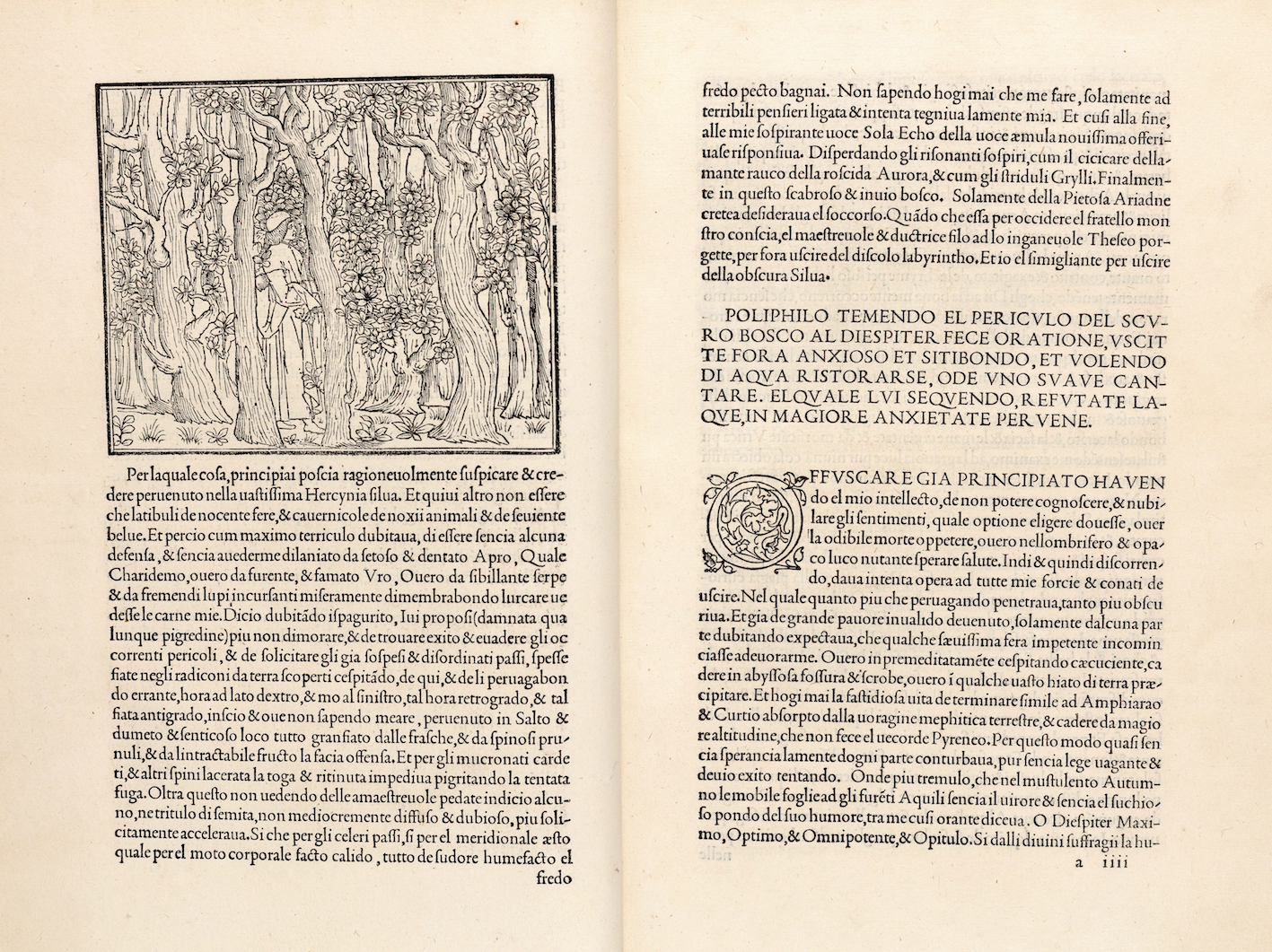
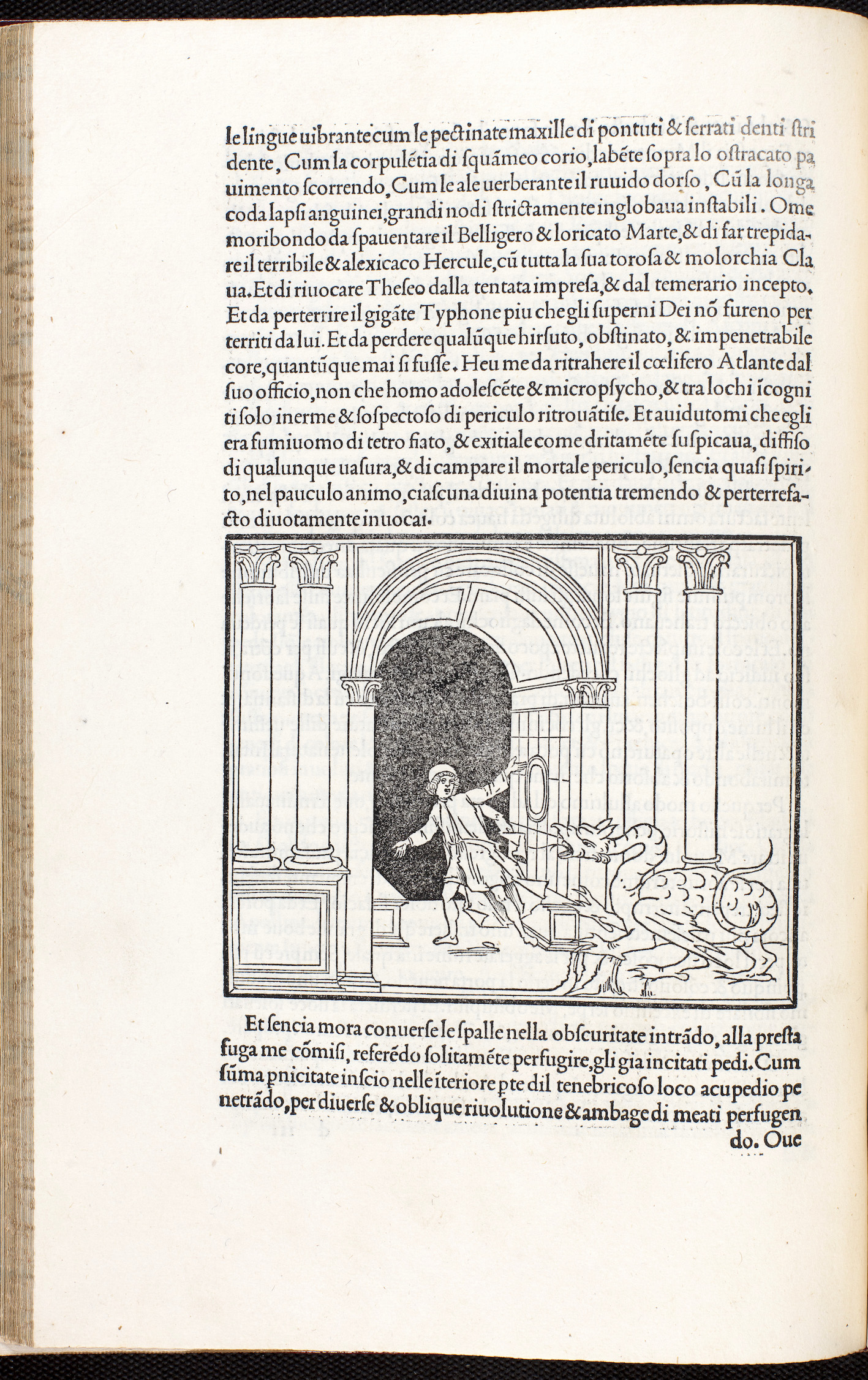
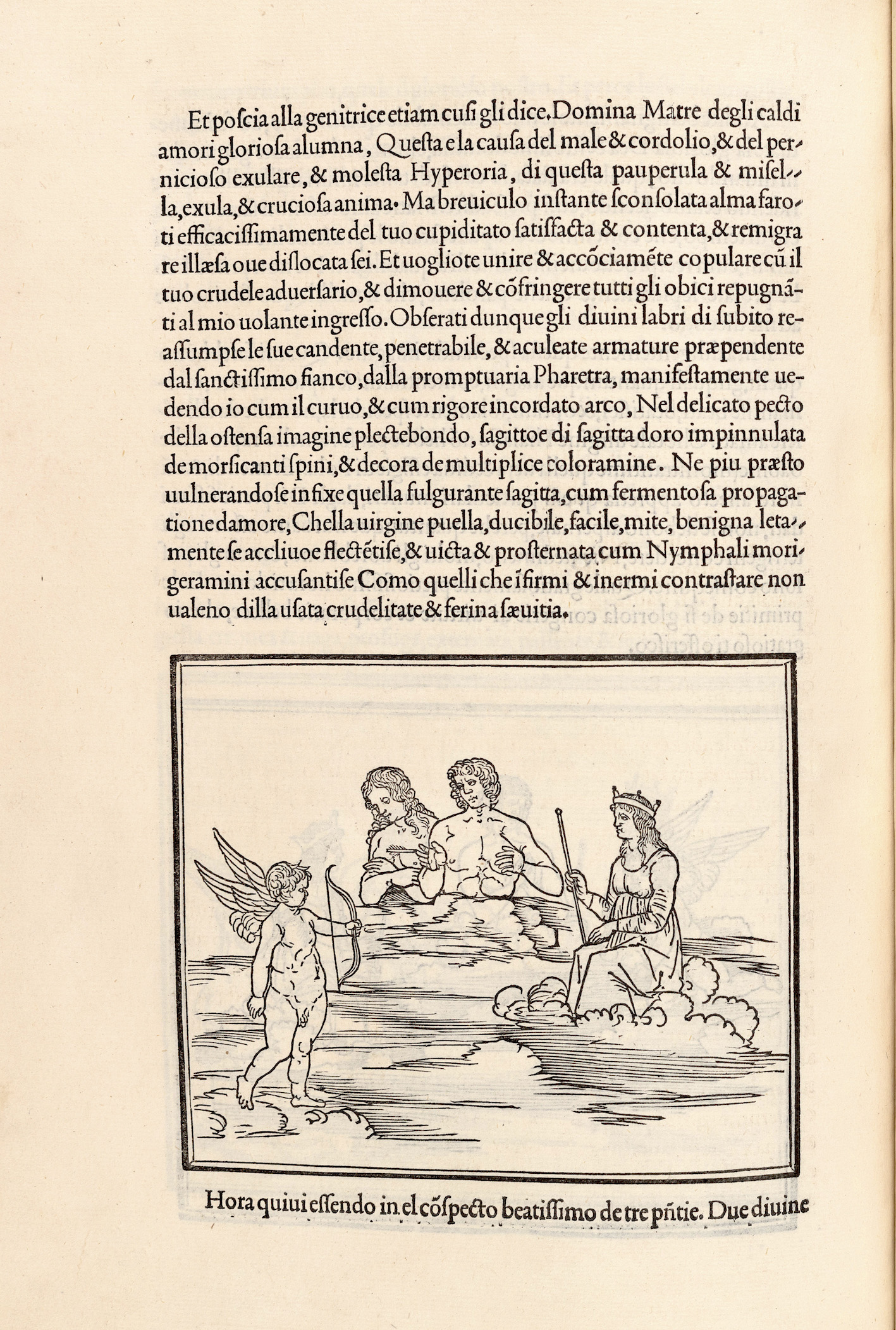
The text is written in a highly learned mix of Italian, Latin and Greek. Its author, usually identified as the Venetian Dominican priest Francesco Colonna, expounds a complex theory of ethics and aesthetics, which was certainly addressed to a public of learned humanists. He worked closely with the author of 172 fine woodcuts by an anonymous Master of the Polifilo, commonly thought to be the Benedetto Bordon, a miniaturist, designer of woodcuts and cartographer, who succeeded in blending his images with the narrative so closely that they often become a “visual text”, and with the printer, Aldus Manutius himself, to create an innovative, and highly influential, layout of type and spaces, that enhances the aesthetic qualities of the page.
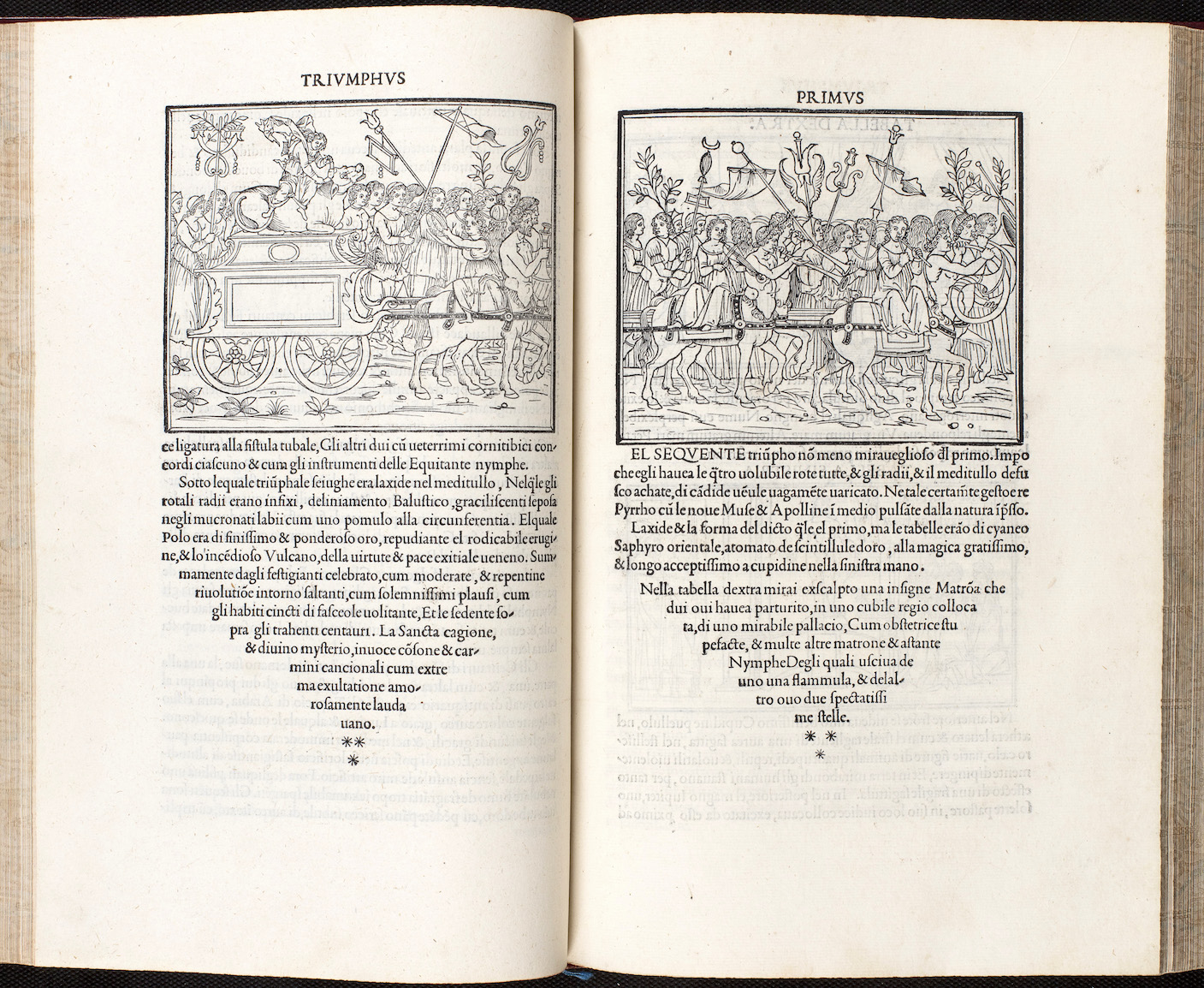

Detailed ekphrases, up to five or six pages sometimes, describe at great length ideal buildings in the style of antique architecture, introducing in the text a spatial dimension that the illustrations prolong and complexify. The Master of the Polifilo, whoever he was, must have been quite familiar with contemporary theories about the representation of space, especially interior spaces, that he boldly applies to illustration. In so doing, he deploys both the modes of representation proper to architects and the conventions of depiction practiced by painters that Leon Battista Alberti mentioned in his texts about perspective.
The representation of the Temple of Venus Physizoa (below) offers a good example of the artist’s creative approach to the depiction of space after an ekphrasis in which Polifilo, neglecting his beloved Polia, profusely expresses his admiration for the architecture of the temple where she led him. An orthogonal projection allowed him to register true to scale both the structure of the walls and architectural details that, disregarding the decoration of the pavement and of the dome, were emphasized through hatching.
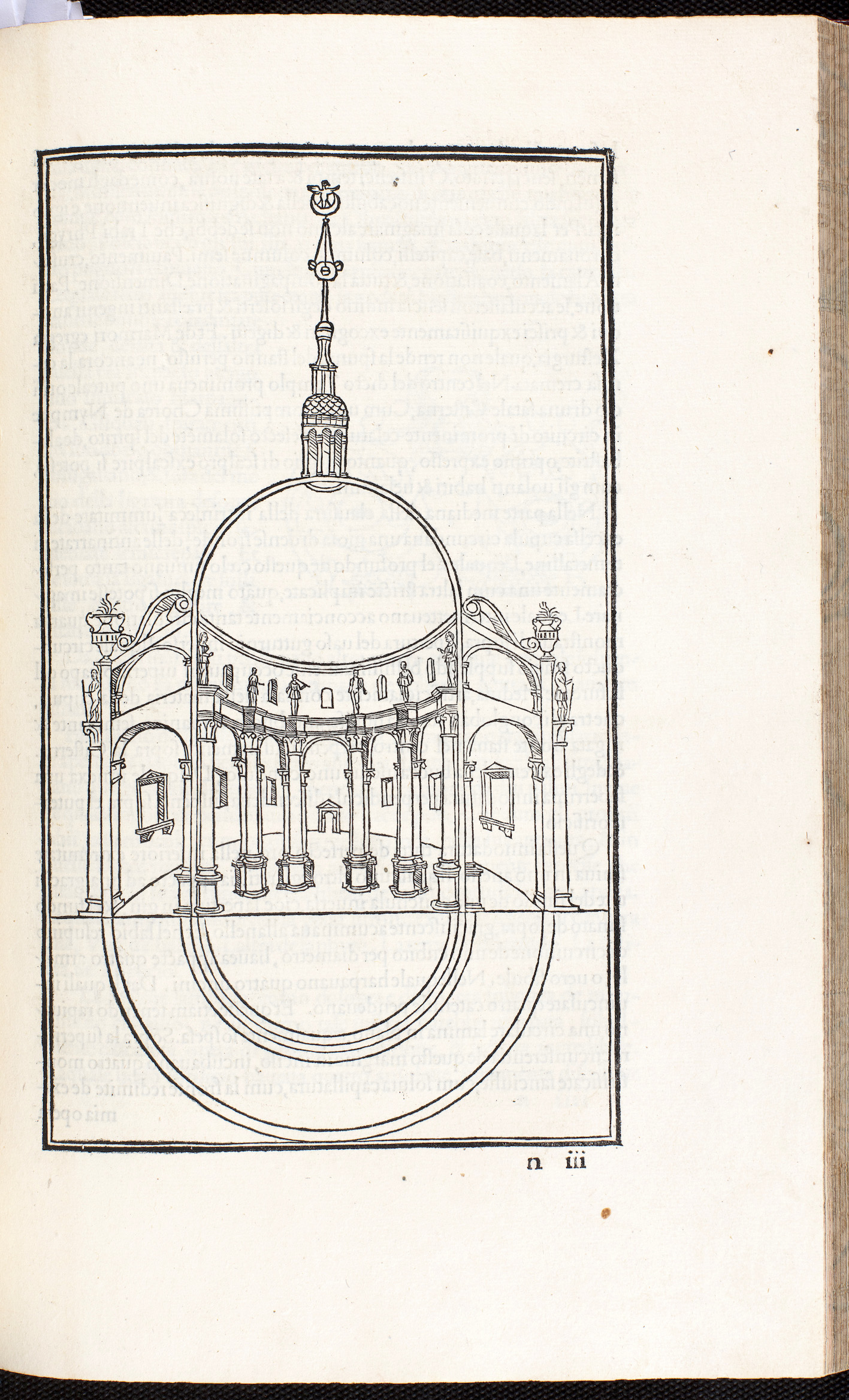
Together with the ground line, drawn across the surface, the three-dimensional columns on the right and left of the semicircle of columns as well as the corresponding pilasters of the outer wall of the ambulatory, frame the interior view and deprive the beholder of any illusion of a continuity of space as the section runs along the middle of the building, while its lantern is shown from the exterior. In the drawing of the temple the artist could have provided complementary information below the base line, on the neutral surface of the sheet. He chose instead to address the interplay between the dome and the underlying space, only representing half of the ground plan, which he connected directly to the abstract base line, as a continuation of the temple walls. In so doing he demanded that the beholder mentally unite the two parts of the image despite the broken illusion of space.
The Hypnerotomachia Poliphili was translated into French by Jean Martin and published by Jacques Kerver in Paris in 1546 and again in 1561. Significantly shorter than the Italian original, this new version adapted both text and images to offer one of the best examples of Mannerist illustration. In it the Temple of Venus is more banally represented by two woodcuts (below) instead of one, one for the exterior and one for the interior, highlighting in contrast the originality of the Master of the Polifilo’s treatment of space.
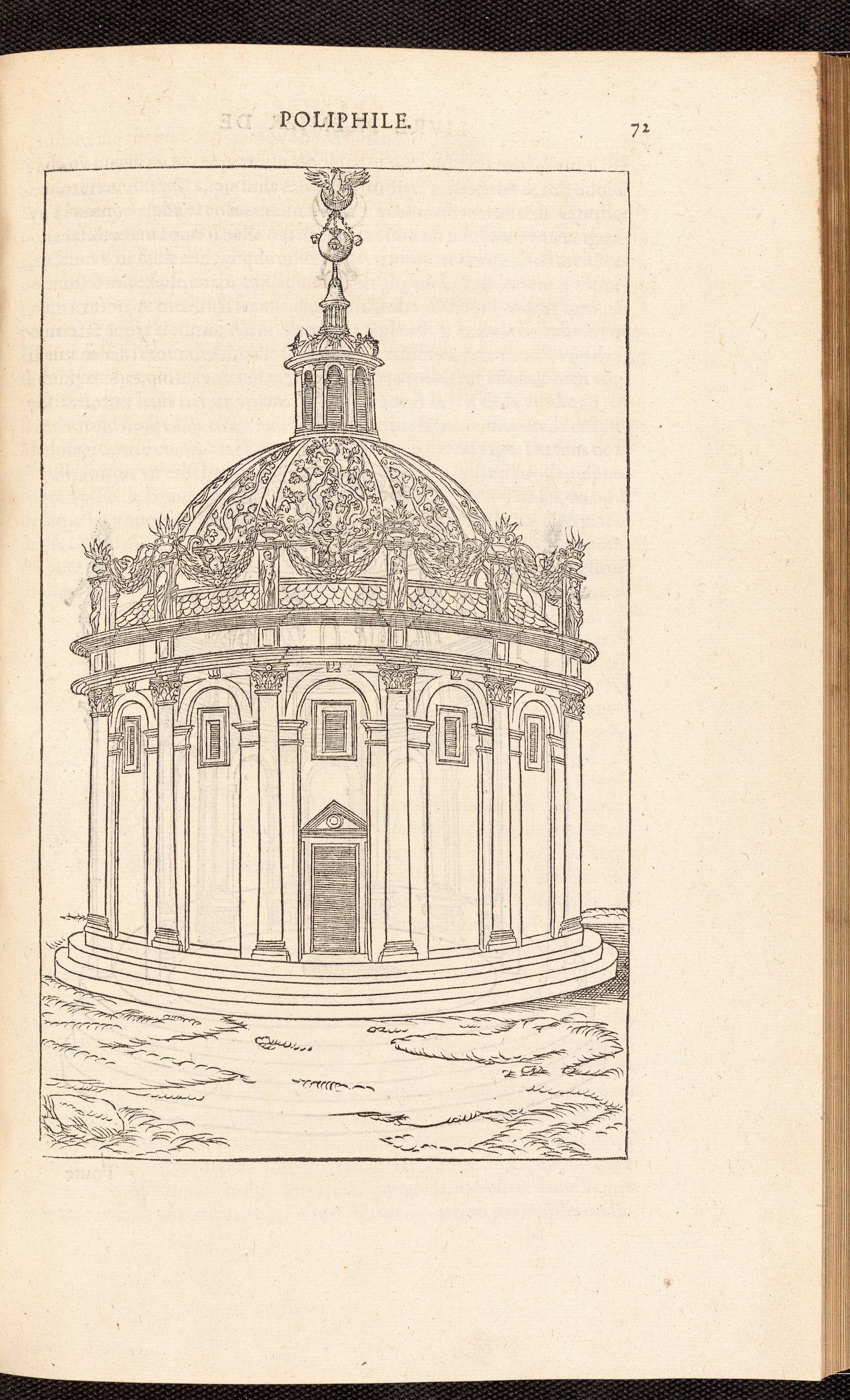
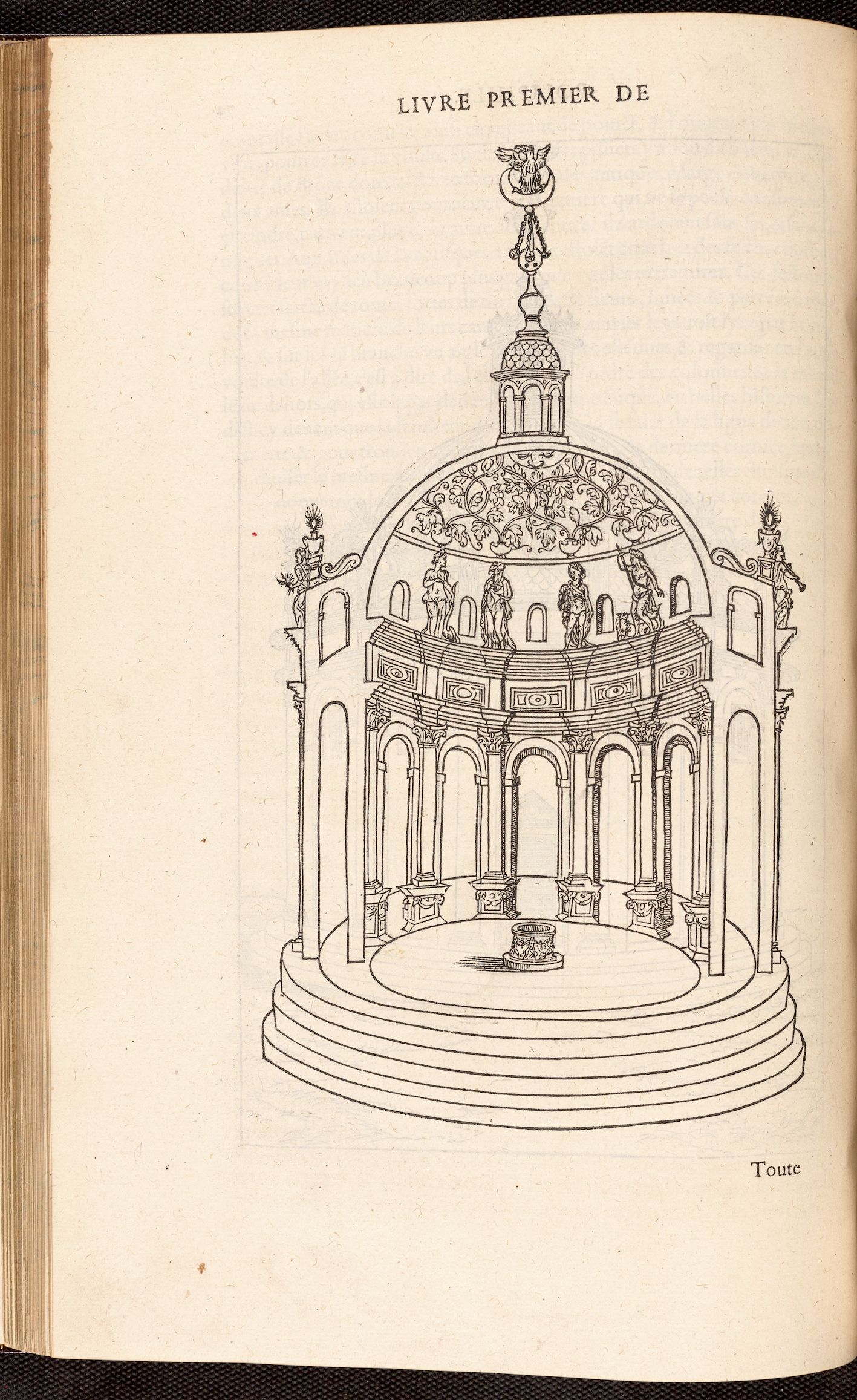
Further reading
Francesco Colonna, Hypnerotomachia Poliphili, edizione critica e commento a cura di Giovanni Pozzi and Lucia A. Ciapponi - Ristampa anastatica in formato ridotto con correzioni, una premessa e un aggiornamento bibliografico (Padua: Antenore, 1980), 2 vols.
Stefano Borsi, Polifilo architetto: cultura architettonica e teoria artistica nell’Hypnerotomachia Poliphili di Francesco Colonna (1499) (Rome: Officina Edizioni, 1995).
Helena Katalin Szepe, “Desire in the printed Dream of Poliphilo”, Art History 19/3 (1996): 370-92.
Roswita Stewering, “Architectural representation in the ‘Hypnerotomachia Poliphili’ (Aldus Manutius, 1499)”, Journal of the Society of Architectural Historians 59/1 (2000): 6-25.
Francesco Colonna, Le songe de Poliphile, traduction de Jean Martin (1546), présentée, translittérée et annotée par Gilles Polizzi (Paris: Éditions de l’Imprimerie nationale, 1994).
A fully digitised copy of the Italian 1499 edition from the Biblioteca Nazionale Marciana is available here.
A fully digitised copy of the French 1546 edition from the Bibliothèque nationale de France is available here.
